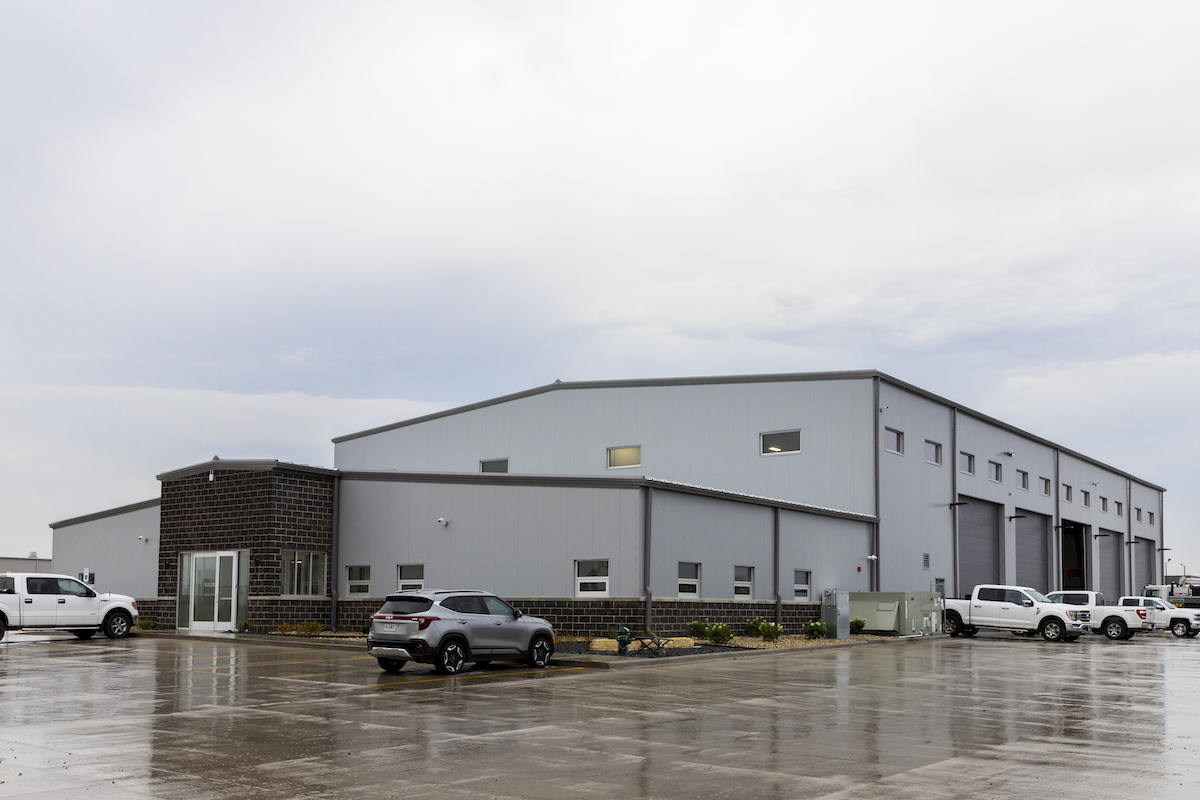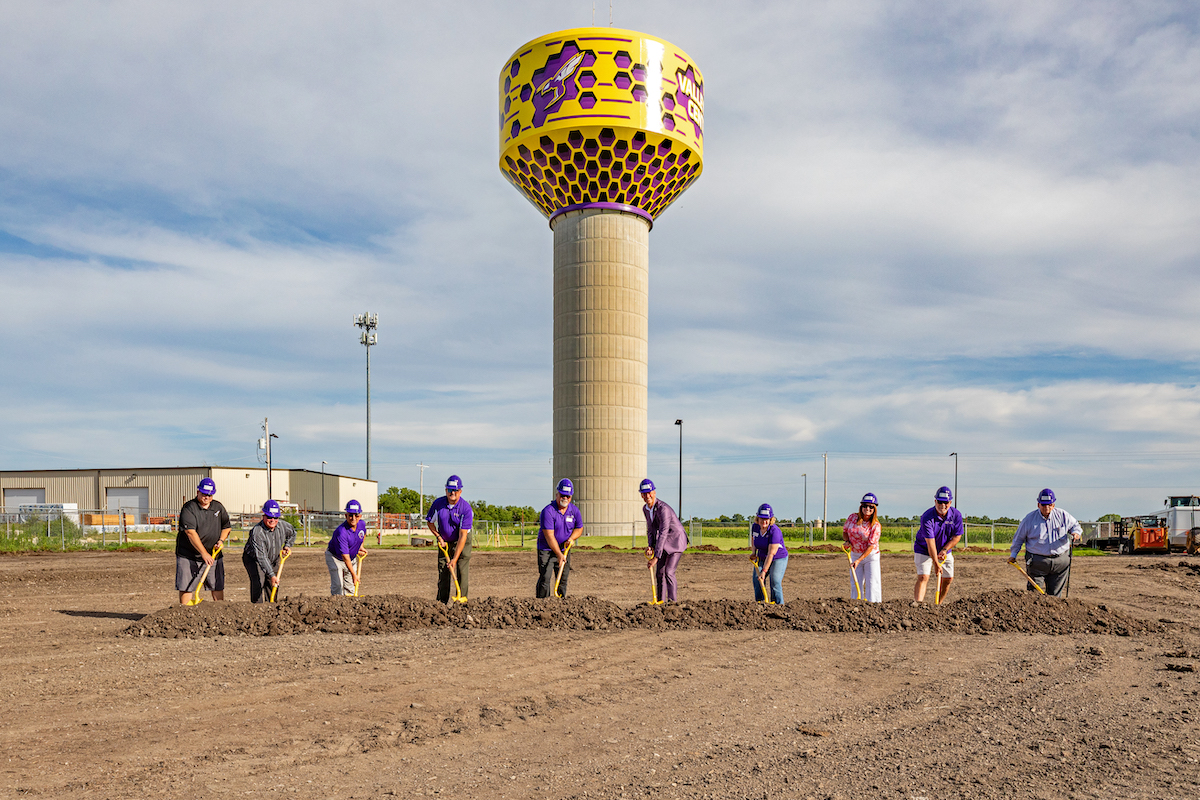The article explains how these “point-and-measure” units can be used at the jobsite wherever moisture is a problem or a specified moisture content needs to be known to proceed with work, whether that involves sand, aggregate, concrete mixes, adhesives, wood frame construction, drywall, or other materials. According to expert John Bogart, Managing Director of Kett US, NIR moisture meters follow the principle that water absorbs certain wavelengths of light. The meter reflects light off the sample, measures how much light has been absorbed, and the result is automatically converted into a moisture content reading.
The major benefit of hand-held moisture measurement is in diagnosing post-construction problems such as water leaks, condensation and mold. Instant handheld analyzers that can be operated by virtually any construction worker in the field deliver lab-quality moisture readings in seconds.
A crucial part of managing any large-scale construction project is staging the work as efficiently as possible so the crew and any subcontractors remain busy while maintaining building quality. However, when moisture or water is part of the equation, decisions about proceeding to next steps, waiting for materials to dry or cure, or even ensuring the ideal ratio of water in adhesives and slurry mixes can be even more critical. The risk can be quality issues, costly re-work, mold, shrinking/expansion/warping of materials and other construction matters.
On most construction sites, there can be uncertainty about moisture levels for a variety of reasons. Building materials can be unintentionally exposed to rain, snow or humidity during framing; unexpected events such as plumbing leaks can occur; drying and curing times of adhesives, mastics, concrete or other materials can be difficult to ascertain; and even the moisture content in raw materials such as powders or lumber may be unclear.
Although the construction industry has access to moisture meters, to some extent, these tools typically require calibration, sampling, and time. In addition, they are not very flexible in measuring a variety of materials in various forms (wet, powder, solid) and certainly are not portable enough to be used on job sites.
Fortunately, a new category of portable, handheld, instant moisture measurement devices are now available for construction workers that can be used on a wide range of materials with no special training.
These “point-and-measure” units can be used at the jobsite wherever moisture is a problem or a specified moisture content needs to be known to proceed with work, whether that involves sand, aggregate, concrete mixes, adhesives, wood frame construction, drywall, or other materials. This new tool is helping expedite project completion and improve building quality for as little as $20 a day when the equipment is leased.
One common test is Loss on Drying, which measures the total material weight change after drying. However, such tests typically require a sample to be prepared and brought to a lab. The test takes a minimum of 15 minutes up to several hours to perform.
Because such traditional moisture tests are too slow, laborious, and alter or destroy the sample, they are not practical for construction sites. Instead what is needed is a fast, easy
point-and-measure method to determine moisture content.
So, industry innovators have developed a simplified approach with testing equipment that utilizes Near-Infrared (NIR) light, a highly accurate, non-contact secondary measurement method that can deliver immediate, laboratory quality moisture readings.
“NIR moisture meters allow very accurate instant measurement of solids, slurries, and liquids without contact or sample preparation in portable handheld models,” says John Bogart, Managing Director of Kett US, a manufacturer of a full range of moisture and organic composition analyzers.
Bogart says that once the meter has been calibrated against lab or production standards, the calibrations are stored in the device so no calibration is required in the field. The calibrations are stored in different “channels” in the unit, each dedicated to a specific type of building material. The user simply selects the proper channel and the measurement is instantly displayed.
According to Bogart, NIR moisture meters follow the principle that water absorbs certain wavelengths of light. The meter reflects light off the sample, measures how much light has been absorbed, and the result is automatically converted into a moisture content reading.
“You can use the NIR meters on anything where measuring surface moisture is important,” says Bogart.
At a construction site, for example, an NIR meter could be used to instantly check the moisture level of bulk dry goods such as sand or aggregate on receipt from suppliers. It could also be used to spot check the moisture content of materials mixed with water.
Bogart says the same approach could help to speed the installation of flooring or tile while ensuring quality control.
“A NIR meter can determine if mastic or adhesive has the correct moisture content to properly bond floor, wall, and ceiling tiles so creep, shrinkage, buckling, or grout problems do not become an issue,” he says.
The meters can also be helpful when finishing a construction project. For example, when painting a wall, a NIR meter can be used to ensure that the paint is dry before adding a second coat.
“Handheld contact gauges can measure the moisture inside many kinds of samples at superficial or deeper levels just seconds after contact with the material,” says Bogart.
As an example, with lumber for framing, once the user sets the thickness of measurement and specific gravity of the wood and touches the sample with the instrument, the moisture content for all kinds of wood is instantly displayed. To avoid dimensional change problems, the U.S. Department of Agriculture’s Wood Handbook recommends average moisture content of 15 percent or less, with maximum readings of 19 percent or less.
In terms of gypsum board, the California Builder’s Guide to Reducing Mold Risk suggests an upper limit of 16 percent wood moisture equivalent (WME) before finishing or installing cabinets.
While the industry has not routinely spot-checked moisture levels in materials during construction, doing so consistently will significantly speed job completion and improve building quality by removing any doubt as to drying time or moisture content.
Although beyond the scope of this story, the same portable measurement devices can also be used post construction to minimize moisture related quality issues.
“The ability to measure material moisture content after construction is valuable for diagnosing post-construction problems such as water leaks, condensation and mold growth,” states the EPA guide Moisture Control Guidance for Building Design, Construction and Maintenance. “It is recommended that builders and facility managers measure the moisture content of materials during post construction diagnosis and problem solving.”






































































